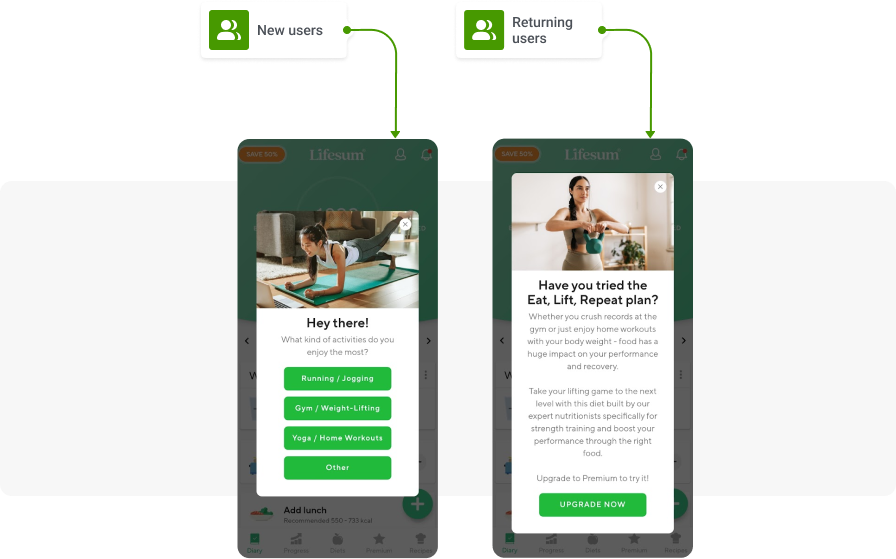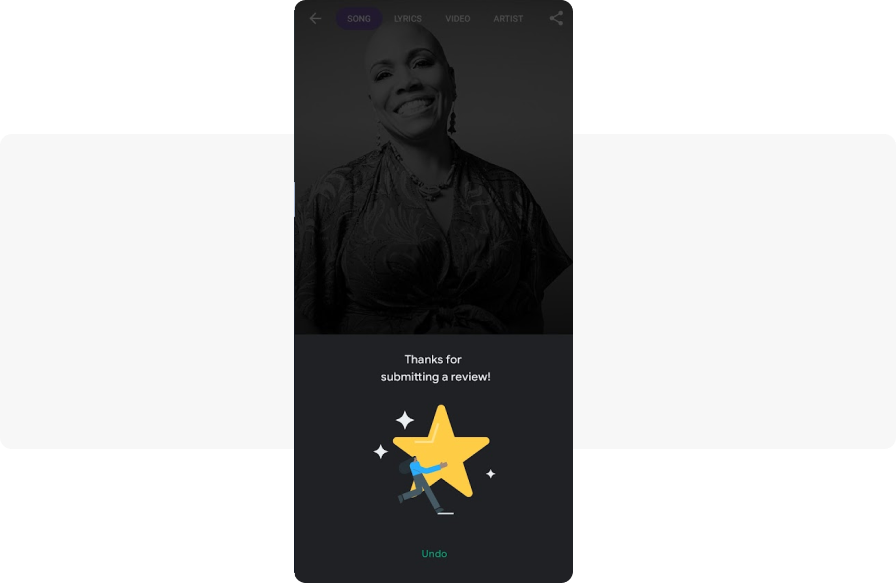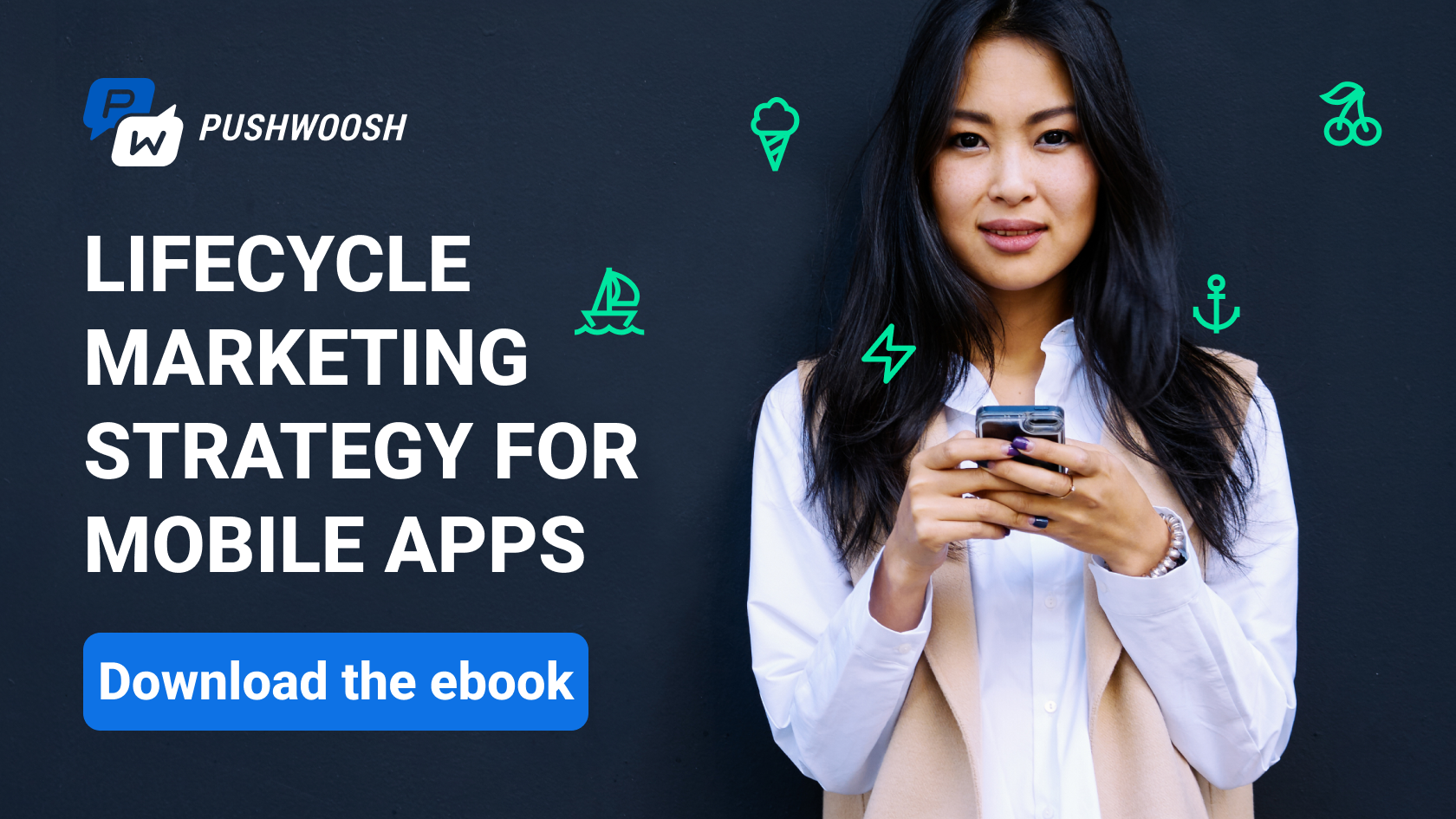Let's delve into ways to deliver value to users at various stages of their lifecycle, cultivate mobile app habits, retain paying audiences, and ultimately, improve customer loyalty.
Plant loyalty and harvest positive feedback
Effective work with user loyalty, resulting in higher LTV, includes addressing the following goals:
- Nurture the habit of using your app;
- Retain your paying audience and ensure long-term revenue;
- Grow & monetize users’ loyalty;
- Stimulate referrals and positive share of voice to attract more users.
How to achieve these goals:
Target: "Haven’t purchased yet", "Have made purchases in the past" — combine these two filters within a user segment to target your campaign. Customers with a history of purchase are more receptive to sales efforts and show potential for retention, and consequently, for providing positive feedback.
Messages: personalized offers, product recommendations, and discounts;
Channel: omnichannel messaging — push notifications + in-app messaging + email (+ SMS and WhatsApp) to follow the customer through the order:

This example is made with Pushwoosh Customer Journey Builder, a tool that helps you map out communication flows and send relevant segmented messaging to customers at every stage of their lifecycle.


Growth Team Lead @ AppAgent, Strategic & Creative Mobile Marketing Agency
Know your users’ “why”
To ensure long-term loyalty, it’s important to know why someone is using your product/service. If you don’t know, find out quickly:- Split users into two groups: new and returning, and use tools like Pushwoosh to tailor your communication.
- Try to understand what each user is looking for and provide information that’s relevant to them. If you’re not sure, you can ask them questions using surveys or during the onboarding process, or just make an educated guess based on the most common ways people use your platform.
Example: Lifesum starts by identifying its new user’s preferences. Once the app understands the user's motivations for using the app, it can present a suitable paid plan that aligns with their needs.


Growth Team Lead @ AppAgent, Strategic & Creative Mobile Marketing Agency
Build long-term loyalty early on
🤩 Provide value as soon as possible
Ideally, even during the onboarding process. Anticipating your customers’ needs and delivering value early on can set the tone for a positive experience and encourage long-term engagement.🤓 Educate and guide if needed
It’s important to ensure that new users know how to use your product or service. Achieving activation is a critical goal if you want to turn them into regular users who develop a habit around your offering. You can use push notifications and in-app messages as effective activation tools to encourage users to engage with your platform and explore its features.🤩 Fulfill expectations
Meeting expectations is crucial to building trust with your users. It’s important to make sure that what you promised in your sales pitch is what your customers actually receive. Take your unique selling proposition (USP) seriously and go above and beyond to exceed expectations.
According to the “Reciprocity” principle from Chialdini, when you give more than expected, people feel compelled to give back. So, by providing exceptional service and value, you can strengthen your consumer relationships and inspire loyalty.
It’s an experience, not a transaction
Customers choose your brand for a variety of reasons, such as your story, design or message. You want to create an experience that not only stands out but is also memorable enough to share with others. Consistency is key, both in design and communication.Be present and supportive
Offering exceptional customer support can help establish trust and demonstrate that users can rely on you if they encounter issues or have questions.
Responding promptly to user reviews on Google Play Store and App Store can also lead to higher ratings and improved reputation. At AppAgent, we have seen this path to success across many different apps and games, as users who receive a response are often motivated to go back and update their rating with a higher number of stars.
Acknowledging user reviews is crucial for enhancing customer loyalty and fostering a sense of community. Here is an example of an in-app message expressing gratitude for user feedback:


Growth Team Lead @ AppAgent, Strategic & Creative Mobile Marketing Agency
Ensure technical quality
Prevent bugs and resolve them quickly if they occur. While returning users may be more forgiving, a negative experience for a newcomer could deter them from using your platform in the future. Keep in mind that platforms with ratings lower than three stars on Google may receive lower visibility, making it even more important to prioritize user experience and quality control.Metrics that prove great retention & loyalty
D30 Retention Rate
Success story: Bantoa, a fashion social e-commerce platform, raised the D30 retention by 37% by sending personalized target notifications.
MAU
Success story: Bantoa got 94% of its subscribers active monthly.
Total number of subscribers
Success stories:
Beach Bum, the leading mobile gaming company, achieved 3x growth in subscribers over a six-month period by implementing automated retention campaigns.
Wetter, a weather forecasting portal, tripled its audience over the year by sending highly relevant and timely weather alerts.
Avianca’s LifeMiles expanded its audience fivefold by sending automated push notifications, including geo-based messages.
App rating in stores
Success story: ASU’s Sun Devil Rewards experienced a surge in mobile app ratings, increasing by 36% in both App Store and Google Play Store within five months (reaching up to 4.5).
Take the wheel of the entire app user lifecycle


